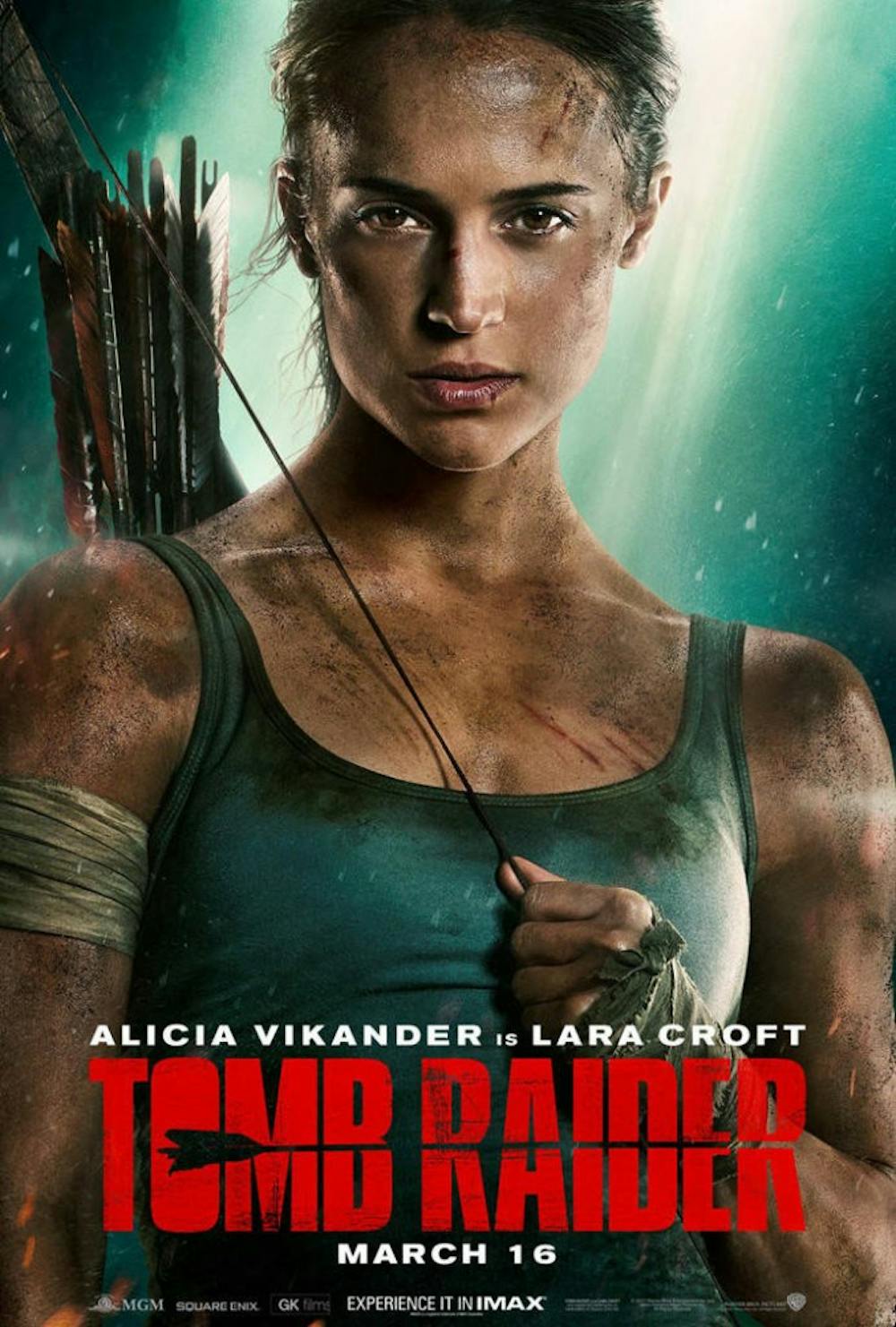The long-running classic “Tomb Raider” franchise is an action-adventure video game series inspired by the Indiana Jones movies. In 2013, the series was rebooted with “Tomb Raider,” a video game, which inspired the live-action movie now in theaters also called “Tomb Raider.”
“Inspired” is the keyword in this description, as the movie adapts the plot of the “Tomb Raider” (2013) extremely loosely. Lara Croft (Alicia Vikander) is a young British woman trying to come to terms with the disappearance of her father Lord Richard Croft (Dominic West) seven years ago. However, when she uncovers a tangled web of intrigue and a trail of clues leading to an ancient Japanese tomb sealed on the forgotten island of Yamatai, Lara journeys to Yamatai to finally find out what happened to her father.
It’s a much simpler plot than that of the game, with a much smaller cast, but “Tomb Raider” (2018) is still bloated as it laboriously over-establishes a great many elements that simply don’t matter. Paradoxically, the main points of the story are left deficient as the film speeds through them with absurdly hackneyed writing. Trying to enjoy the movie for its plot, then, is like reading a thesaurus in preparation for a philosophy exam.
The reason that the movie is so misshapen — the core issue that belies most of its other flaws — is that the movie constantly references “Tomb Raider” (2013) without any sense of purpose. Various names, scenes and essential items are pulled from the game, and while they are all certainly recognizable for anyone who’s played the game, they aren’t much more than just that — recognizable. The references don’t work for the movie and the movie has to work for the references, spreading itself thinly to cover disparate elements that don’t make sense in the movie’s new context.
This issue is made most apparent through the film’s antagonist, Mathias Vogel (Walton Goggins). Vogel’s backstory, occupation and motivation are almost completely different from those of the game villain that he is named after, but the film still tries to give him a similar personality. The result is inconsistent, nonsensical on its face, confusing, unthreatening and just plain boring. Saddled as he is with such a terrible script, Goggins just seems like he doesn’t know what he’s doing half the time, but by the end he is perfectly channeling his character — just as Vogel wants to leave Yamatai, Goggins seems like he’s desperate to finish the movie and go home. And really, that makes him the most sympathetic character of all.
The only other performance of note is that of Alicia Vikander as Lara. Vikander is good — or at least serviceable — at everything she is called upon to do, which is helpful considering that she is called upon to do basically everything. Lara is sassy, serious, adventurous, level-headed, emotional, intelligent, overwhelmed, driven, desperate and hot-headed — basically, whatever she needs to be to move the plot forward at any given moment. The film wrestles with its own identity as an origin story, as Lara already starts out with the attitude and abilities of an action hero and thus, doesn’t seem to have a coherent arc to follow.
If Lara does have an arc, then perhaps it is instead expressed through physical endurance, through the challenges she faces and pain she suffers in the action-hero tradition of films such as “Die Hard” and “Kill Bill.” “Tomb Raider” (2013) had such an idea, and was noted for having a much darker tone than previous entries, with intense, realistic violence and other gruesome content — the Entertainment Software Rating Board gave it a Mature 17+ rating. The PG-13 film, on the other hand, only attempts to don such darker shades for minutes, if not seconds, at a time. Not that being darker or grittier is automatically better, but the film is just so mild that it lacks atmosphere and leaves Lara’s struggles feeling empty.
But even if the violence was more extreme, the final critical flaw of the film is that its action scenes are completely inept. Every action set is either monotone and darkly lit or bright and distractingly cluttered, with basic camerawork that does very little to draw the eye. Every single action is over-edited with too many short takes and frantic cuts that fail to establish where anyone is in relation to anything. The choreography and stuntwork are fine but almost meaningless in the face of misguided cinematography that robs the action of any impact.
Whether or not you know or like anything about the Tomb Raider franchise, the film has nothing to offer you. It is better, perhaps, than previous attempts at Tomb Raider adaptations, but still boring and disposable. The key to adaptation is transplanting the heart of what makes the original enjoyable, but “Tomb Raider” (2018) is content to just step on the original game’s grave.





